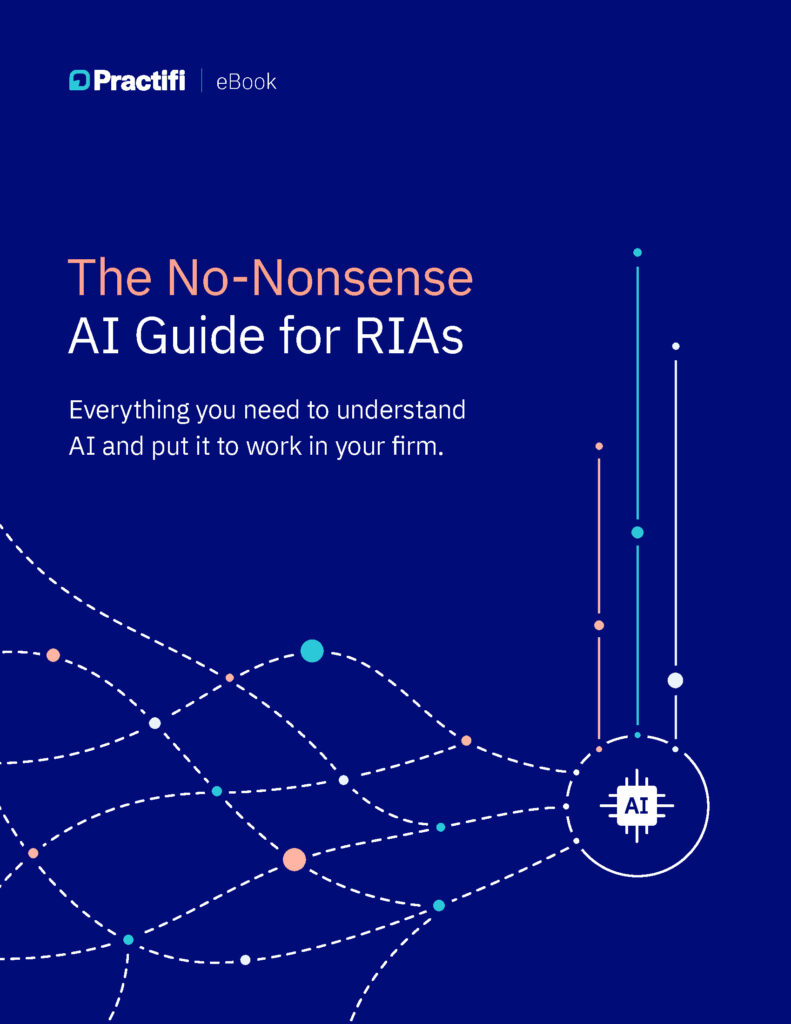
Why the Future of Advisory Success Starts with Client Experience
Client experience isn’t a nice-to-have anymore. For modern advisory firms, how you show up for clients’ day to day matters just as much as the advice you give. In a crowded market, trust, responsiveness and care leave a more lasting impression than numbers alone. Advisory work may start with a financial plan, but what keeps clients around is how they feel throughout the journey.
Experience Is the New Standard
Clients expect more than solid advice. They want to feel like their advisor truly gets them — their goals, their worries, their preferences. A thoughtful experience turns financial planning into a partnership, not just a service. That means more than answering emails quickly or sending out birthday cards. It means knowing when to check in, anticipating major life moments and making every interaction count. When clients feel genuinely supported, they don’t just stay. They engage more deeply, refer more often and trust more fully.
If you’re rethinking how your firm delivers client experience, start by asking the right questions:
- Are we delivering value in ways clients actually feel? A great report isn’t enough if it doesn’t feel meaningful. Make sure the value you’re providing is visible and relevant to the client’s life, not just their account.
- Does our experience feel personal or just efficient? Fast responses matter, but so does warmth. A message that feels tailored can carry more weight than a perfectly timed automated email.
- Where do clients get confused or disengaged? Look for drop-off points in your process such as onboarding, scheduling or reviews and consider what might be causing friction or a loss of momentum.
- How often do we proactively reach out? Waiting for clients to contact you often means you’re reacting, not leading. Proactive touchpoints show attentiveness and build confidence.
- Is our team aligned on what a great service looks like? Everyone should understand what “excellent” means at your firm — from the first email to the final review meeting. A shared standard helps keep service consistent across roles.
These questions aren’t only for fixing problems. They uncover opportunities to improve every part of the client journey, turning good into great and routine into memorable.
Personalization Starts with Process
Clients want advice that aligns with their goals and feels personally designed for them. But true personalization goes beyond remembering birthdays or sending handwritten notes. It requires a structured, repeatable approach that delivers a thoughtful experience consistently.
That starts behind the scenes.
When your systems and workflows are designed around client needs, personalization becomes repeatable. You’re not scrambling to remember key details or react to client questions. You’re already one step ahead, anticipating what they need before they ask. A few ways to build this into your process:
- Use your CRM to track goals, milestones and preferences — not just contact info.
- Set up workflows that remind your team when to check in and what matters most, based on each client’s unique situation.
- Build onboarding and review processes that adapt to the client, rather than forcing every relationship through the same template.
Personalization doesn’t need to feel scripted. In fact, the right process helps it feel more natural, because the foundation is already in place. Rather than guessing, your team is making intentional, meaningful connections.
Technology as the Enabler, Not the Experience
Technology should make your team more human, not less. When used well, it takes care of the behind-the-scenes work so advisors can focus on what clients actually care about — real conversations, clear guidance and reliable support.
Automation can handle reminders, document delivery, scheduling and follow-ups. A strong CRM can pull together everything you know about a client in one place. These tools don’t replace the relationship; they help you show up more prepared and fully present.
Think of it this way: technology is the backstage crew, not the star of the show. Clients should feel a smooth, responsive experience, not the mechanics behind it.
The better your systems run, the more your team can focus on listening, advising, and building real relationships. The real value lies in freeing up your time so you can spend more of it where it matters: with your clients.
Feedback Isn’t Optional
If you want to know how your clients feel about your service, the best way to find out is to ask. Feedback isn’t just a customer service tactic. You should utilize it as a tool for growth, relationship-building and trust. A good client experience includes regular check-ins on how things are going. Not just during performance reviews, but in moments that show you care about more than the numbers. Asking for feedback gives clients a voice. Acting on that feedback proves you’re listening.
Here are a few ways to make feedback part of your experience:
- Ask clients how they felt after onboarding. What worked? What didn’t?
- Use surveys or simple follow-up questions after key meetings to spot patterns.
- Create space for open-ended input. Clients may highlight issues or insights your team didn’t expect.
Feedback should feel like a conversation, not a checkbox. When clients see that their input leads to real improvements, they become more engaged and more loyal.
The best experiences aren’t built in a vacuum. They evolve and are shaped by the people who matter most.
Designing Experiences That Stick
Advisory firms don’t stand out because of flashy tools or clever taglines. They stand out because clients feel seen, heard and supported at every step. A great experience doesn’t have to be complicated it just needs to be intentional.
Every touchpoint is a chance to reinforce trust and deepen connection. Whether you’re refining onboarding, simplifying your tech stack or rethinking how you gather feedback, the goal stays the same: to build relationships that last.












